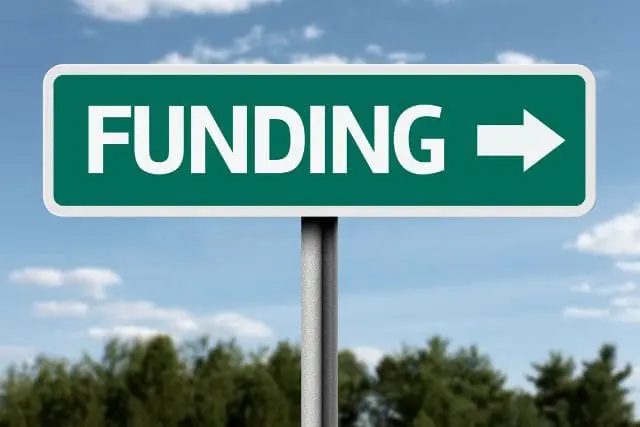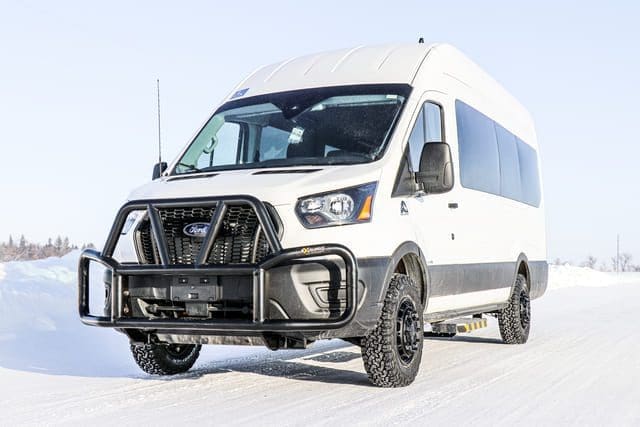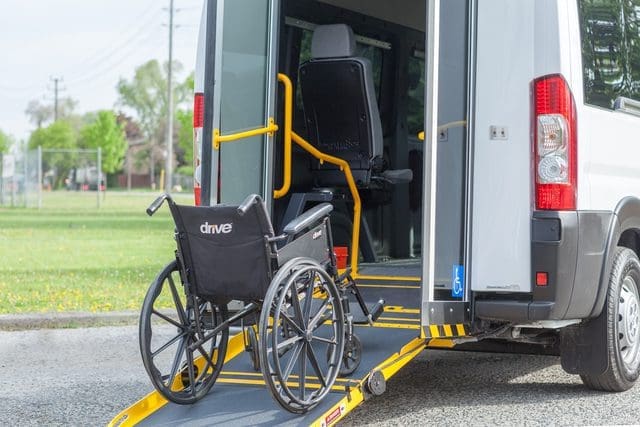Writing a grant application can feel like a huge task, especially when your organization needs funding to get started. You might be feeling stressed and unsure about how to even start or what to include. Don’t worry—you’re not alone. Many organizations need funding to buy vehicles that help break barriers to healthcare or transportation, just like yours. We get it, and we’re here to help.
At MoveMobility, we’ve been manufacturing mobile medical and wheelchair accessible vans for over a decade so that everyone has equal access to healthcare and transportation. Over the years, we’ve learned a lot about grants by working with organizations like Hearthstone that secure funding through them, and we’re excited to share some of our knowledge with you.
In this article, you’ll learn about the top 5 things that make a successful grant application. We’ll give you tips and strategies to boost your chances of getting the funding you need. Let’s dive in and learn what it takes to make your grant application stand out.
What are some tips for drafting a successful grant application?
Several things can be done to create a successful grant application that stands out from the rest.
1. Use specific, targeted terminology
Writing a successful grant application depends a lot on the words you use.
Using specific and clear terms makes your application easier to understand and more powerful. When you use key terms related to the grant, it shows that your project fits well with what the funders are looking for.
For example, if you’re asking for money to fund a mobile medical van, use terms like “community healthcare,” “preventative care,” “mobile primary care”, and “medical outreach.” It might sound trivial, but the right terms show you know what you’re talking about and that your project matches the funder’s goals.
Being specific also shows that you have a solid plan. It helps the reviewers see that you know what you need and how you will use the funds. Instead of saying, “We need a van to help people,” you could say, “We need a mobile medical unit to provide healthcare in areas where people don’t have easy access to doctors. This will encourage preventative health and reduce emergency room visits.”
This kind of detail helps paint a clear picture of your project and shows that you’ve thought it through.
2. Understand the evaluation criteria
Knowing what the reviewers are looking for is important before you start writing your grant application.
Reading the evaluation criteria in the application helps ensure that your project fits the funders’ criteria.
Here’s why this matters:
Show alignment: Mentioning the evaluation criteria in your application shows you know what’s needed. This builds trust in your application and reviewers will recognize you did your homework.
Highlights key strengths: Another reason why understanding the evaluation criteria matters is that it helps you strategically highlight the key strengths of your program. It’s a more targeted approach when you focus on the impactful aspects of your project and allows you to make a more compelling case for why it deserves funding.
Example:
Imagine your organization is filling out a grant asking for money to fund a wheelchair-accessible van. The evaluation criteria might include:
- Impact on the community: Explain how the van will help people with disabilities get to important places.
- Feasibility: Show that you have a clear plan for how the van will be used and cared for.
- Cost-effectiveness: Provide a detailed budget to prove that the project is worth the investment.
When you address these criteria directly, you show that your project meets the funder’s goals. For instance, you might say, “Our wheelchair-accessible van will provide transportation for 200 people with disabilities each month, helping them reach medical appointments and community activities.”
3. Include a letter of recommendation
Including letters of support and recommendation in your grant application can make a big difference. These letters show that others believe in your project and think it’s important. They can come from different sources, like government officials, community leaders, or other organizations.
Why do letters of recommendation matter?
Show endorsement: Letters from respected people or organizations show that your project has backing and is considered valuable.
Build credibility: These letters can validate your project’s importance and impact, making it more likely that funders will support it.
Example:
Suppose you’re applying for a grant to fund a mobile medical van. Getting a letter of support from a local government official or a respected community leader can be very helpful.
- A letter from a mayor or a council member can show that your project has official support and is seen as beneficial to the community.
- A letter from a well-known community leader can show that the community believes in and supports your project.
Suppose you got a letter from a local mayor saying, “This mobile medical van will greatly improve healthcare access in our community that struggles greatly with it. It will provide essential services to those who need it most.” This type of endorsement can strengthen your application and show that your project has strong support behind it.
4. Detail your goals and objectives
Another important aspect of a successful grant application is clearly defining your goals and objectives. This helps reviewers understand how you plan to use the grant funds and what you hope to achieve.
Why is it important to have clear goals and objectives?
Provide clarity: Clear goals and objectives make it easy for reviewers to see the purpose of your program.
Detailed goals demonstrate planning: They show that you have thought through your program and know what you want to accomplish.
Example:
Let’s take another example where you’re applying for a grant to fund a mobile medical van. Here’s how you could define your goals and objectives:
- Goal: Improve access to healthcare for underserved communities.
- Objective 1: Provide mobile healthcare services to 1,000 people in northern rural areas within the first year.
- Objective 2: Provide preventive care by the end of the second year to reduce emergency room visits by 20% in the targeted communities.
When you’re specific, it shows that your organization has a solid plan. For instance, you might say, “Our goal is to improve access to healthcare in rural areas. We plan to serve 1,000 people in the first year by offering mobile healthcare services. We aim to reduce emergency room visits by 20% through preventive care.”
This level of detail helps reviewers understand exactly what you aim to do and how you will use the grant funds to achieve it.
5. Demonstrate feasibility
Another key to a successful grant application is showing that your project is doable and will make a difference. Reviewers need to know that you have a realistic plan and that your project will help people.
Why is it important to demonstrate feasibility and impact in your grant application?
Build confidence: Demonstrating feasibility shows you have a clear, realistic plan for your project.
Show value: Highlighting the impact of your project shows how and why it will benefit the community you’ll be bringing it to.
Example:
Imagine you’re seeking funding for a Mobile Outreach Van to help homeless people in Vancouver. Here’s how you could show feasibility and impact:
Feasibility: Explain your plan for setting up the outreach program, staffing it, and maintaining the van. Include details like, “We have partnered with local nonprofits to provide trained volunteers and social workers. We also have a maintenance plan to ensure its reliance all year long.”
Impact: Show how the van will help the community. For example, “This Mobile Outreach Van will provide essential services, like food, medical care, and counseling, to 300 homeless people in Vancouver monthly. This will help them stay healthy and find housing.”
While demonstrating feasibility is a bit similar to your goals and objectives, it differs in the way that it’s more focused on drawing realism to your plan. If you can show your funders that you have a detailed plan for getting and maintaining your van, along with partnerships in place for staffing and upkeep, you’ll find more success with your grant application.
Reviewers will see that your project is well-planned and will make a real difference in the lives of people your organization is reaching out to.
Master your grant application for success

You came to this article to learn how to create a successful grant application and increase your chances of securing funding for your project. After reading, you now know the importance of:
- Using specific terminology
- Understanding evaluation criteria
- Including letters of support
- Detailing your goals
- Demonstrating feasibility
At MoveMobility, we pride ourselves on our long history of supporting organizations in breaking barriers to healthcare and transportation. With our innovative mobile medical vans and wheelchair-accessible vehicles, we’ve empowered countless projects to reach their full potential. Our deep industry knowledge and commitment to excellence make us the trusted partner for your mobility needs.
Ready to team up and make your project a success? Click the button below to connect with a mobility expert, and let’s work together to bring your vision to life.
If you’re not ready to speak to someone just yet, you should check out our articles on the cost of mobile medical vans and wheelchair accessible vans. This will give you a better idea of roughly how much funding you’ll need to get started. In addition, keep a keen eye on some of the grants the Government of Canada advertises.






